It’s time to throw out the design rule book, or at least revise it, with contemporary takes on classical kitchen projects
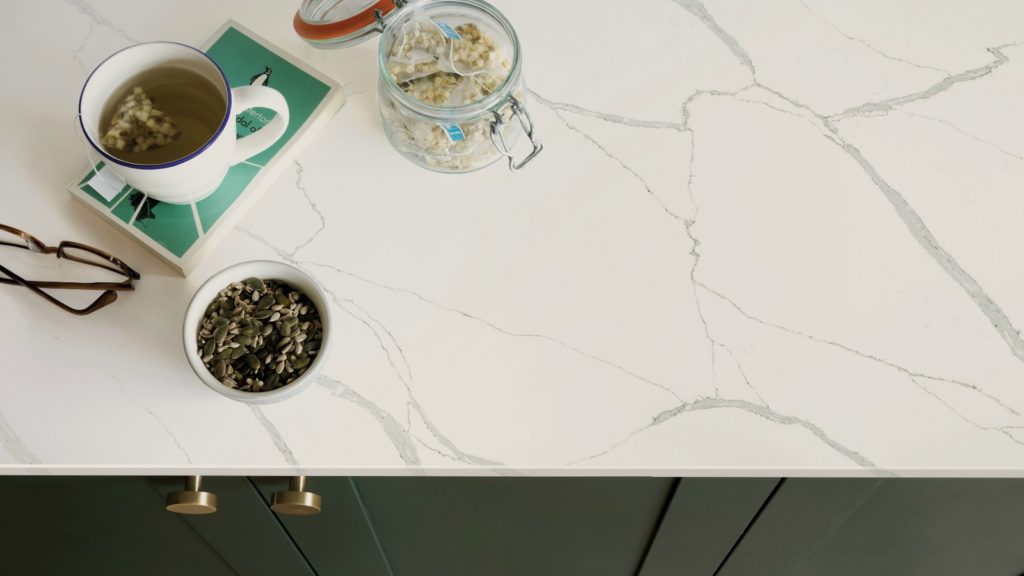
Part of the CRL Quartz worktop collection, from CRL Stone, is the marble inspired Calacatta décor. It is available as a book-matched option to create a design statement in the kitchen
Taking inspiration from the digital world, where updates are indicated by numerical suffixes, the kitchen industry has now adopted the same.
Enter open plan 2.0 and classic kitchens 2.0, indicating these are up-to-date versions of the design concepts that went before.
Sponsored Video
But why has there been a re-invention of the classical kitchen?
Quite simply, the looks are timeless and in times of uncertainty reassure consumers but have evolved to meet changing lifestyles and the way in which we live in our homes has evolved.
Classic kitchens 2.0 is a hybrid design, combining classical elements with contemporary influences.
It combines shapes, colours, finishes and materials to create a timeless style without constrictions and with added personality.
Commercial director of Crown Imperial Tony McCarthy says: “A classic contemporary kitchen can be best described in layers, starting with a classic frame and thereafter adding elegant touches whether handles, storage and pantry centrepieces and completing with state of the art appliances and work surfaces.”
And group marketing and retail sales director for Symphony Simon Collyns agrees: “Creating a classic contemporary kitchen is all about creating a classic aesthetic, but incorporating modern materials and state-of-the-art appliances.”
Starting with structure
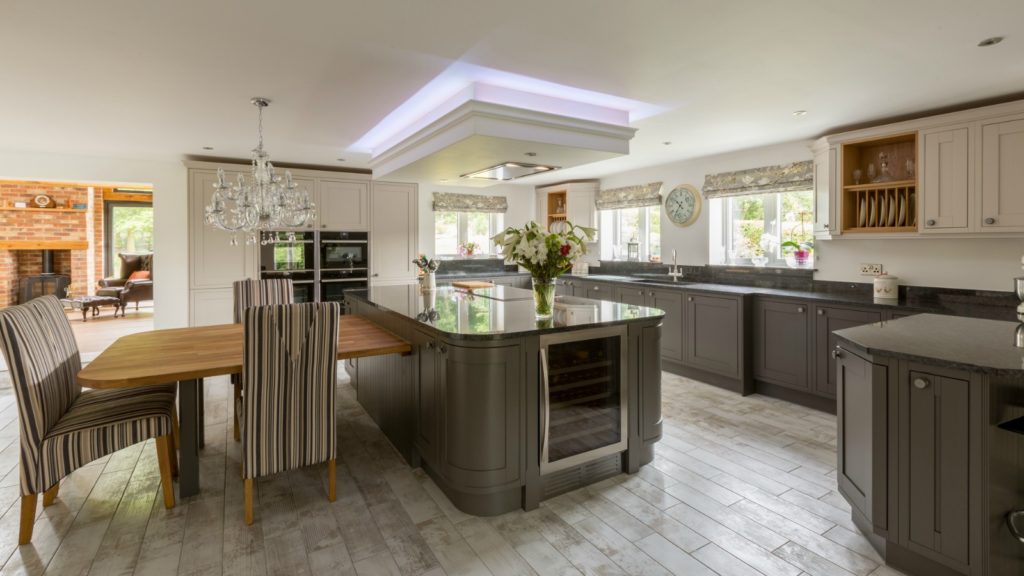
The classical Cotwood kitchen, from Crown Imperial, takes on a modern feel using two complementary paint finishes. It also showcases the trend for the kitchen island to blend into a seated dining area
This combination of classical and contemporary aesthetic is created not only by the layout, but a combination of materials, textures and colour choices.
Of course, the open plan (or indeed broken plan) remains key, with an island.
To bring this look bang up to date, kitchen category manager of Lochanna Kitchen Sinead Traynor says: “Taking this trend to a new level in the contemporary classic kitchen is the inclusion of an island seating area; this is where the kitchen island features an extension island dining area, meaning you get the storage benefits of an island but also the addition of integrated dining.”
And this structure can be created with simplified classical styles, to create a modern look.
Commercial director of Masterclass Kitchens Steve Tough explains: “Skinny Shaker doors are an effective way of giving a classic kitchen a modern twist.”
And marketing manager at TKC, Neil Taggart, says this is reflected in his company’s sales: “Our best-selling classic contemporary range is Oxford.
“It’s a Shaker style which is typically traditional but features a narrower frame width and has a one-piece construction giving it a more contemporary aesthetic.”
Material impact
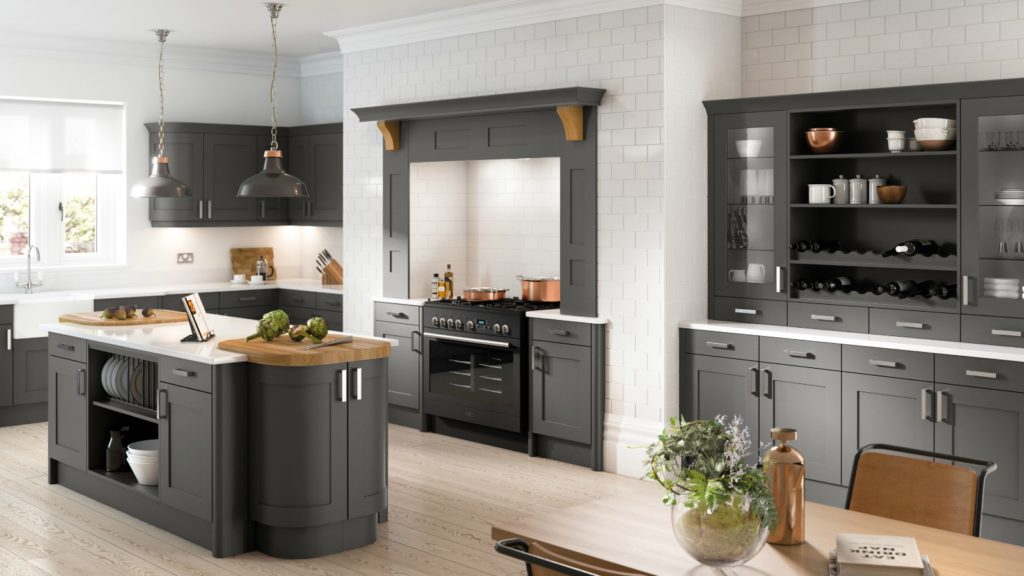
The Shaker-style Oxford door, from TKC, features a narrower frame width than traditional furniture. The Anthracite Grey finish also offers a contemporary aesthetic to a classical kitchen
But to create real impact, colour and material choice can have a huge impact on creating a transitional look, particularly when used in combination.
Steve Tough of Masterclass Kitchens adds: “A trending colour, introduced on a painted kitchen can successfully combine old with news, while the use of materials such as glass and stainless steel gives the kitchen a timeless appeal.”
And these combinations can be through doors, handle, worktops or appliances, as Neil Taggart of TKC points out: “Handles in copper or stainless steel, squarer edged stone or timber worksurfaces, modern appliances and contemporary tiles bring a fresher and more streamlined take, while also respecting the classic styling of the doors.”
And director of Karonia Andrew pickup agrees: “Classic kitchen styles, such as the popular variations on a Shaker theme, have enduring appeal but adding a luxurious solid surface worktop can add a unique, contemporary twist to the overall design, while retailing the essentially timeless look.”
Marble moves
Equally, contemporary style furniture can be given a more classical appearance with the use of marble-effect quartz worktops.
Managing director of InHouse Wayne Dance says: “Worktops play a key role. Marble was a material favoured in times past, so it’s a natural choice for the traditional look. Modern day alternatives, such as laminate, ceramic and quartz stone tops, create an extraordinary level of flexibility and affordability.”
Marble meets the trends for neutral kitchens, as managing director of Maxtop Quartz Stephen Moss comments: “At the moment, we’re seeing neutral tones dominate décor trends, so the design interest that marble swirls and veining bring are a great way of expressing character in the kitchen.”
And managing director of CRL Stone, Simon Boocock agrees, adding: “Marble-inspired materials are extremely popular and can be paired with virtually any colour scheme and other materials, from raw wood to stainless steel to create the desired effect.”
Hi-tech heritage
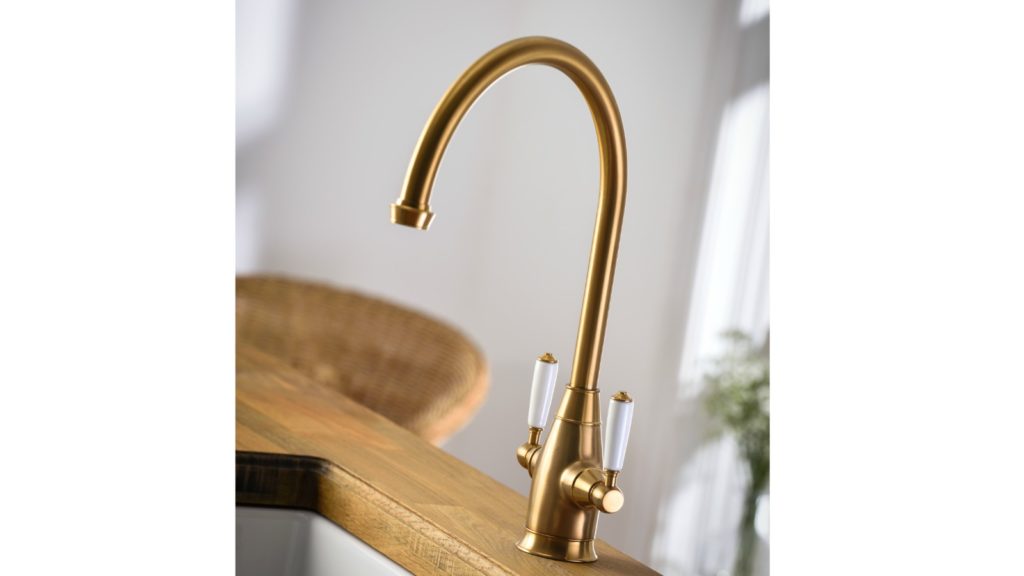
The classical-style Astbury Monobloc from Abode features ceramic handles and comes in a choice of Brass, Pewter and Chrome. It creates a transitional classic contemporary look for brassware
Combining timeless styling with technology has also see a raft of brassware developed in more classical styles and materials.
Consider the hot tap appliance or filter water tap which now come in transitional styles and a variety of alternative finishes to chrome, as marketing manager of Abode Leanne Adamson adds: “While such products may be very contemporary in their thinking, they can still be chosen to fit seamlessly in a traditional styled kitchen, catering to modern demands, while not compromising aesthetically.”
She continues: “In the kitchen, brass and ceramic are often associated with a traditional styling, while combining the two can give the room a modern twist.”
Designer dream
But the options on how to create the classic kitchen 2.0 look is practically limitless, offering designers true flexibility in furniture, appliances, colour and material choice.
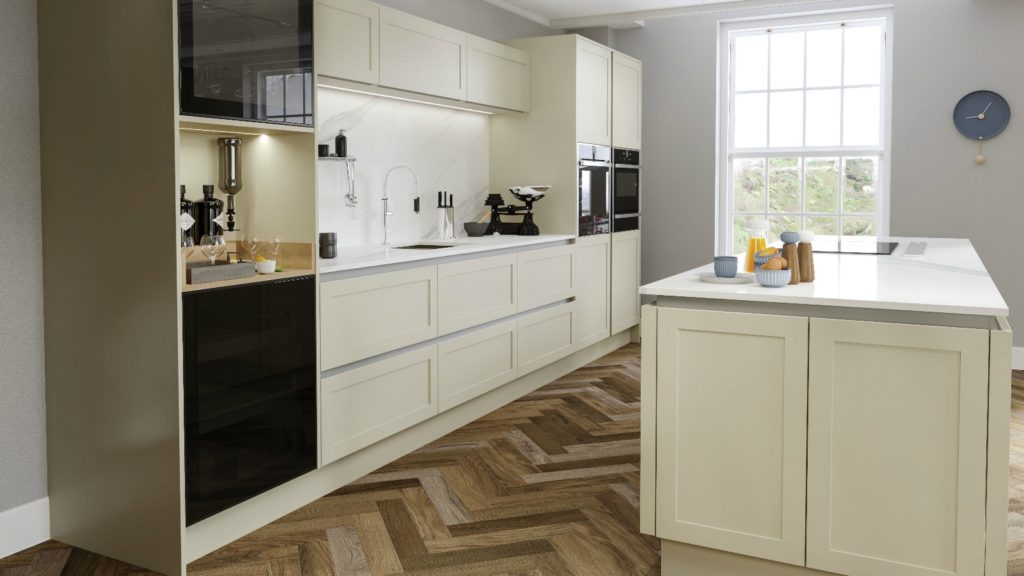
Retailer Sheraton Interiors created this contemporary take on a classical kitchen for a customer using the Easington Collection from LochAnna Kitchens. It is a handleless Shaker design in the colour stone
“The options can be extensive”, agrees furniture manager at Caple Doug Haswell, who continues “as there are so many modern and classic colour ways to play with within one kitchen design.
“The designer can also play with materials, introducing modern materials with more classic decorative elements.”
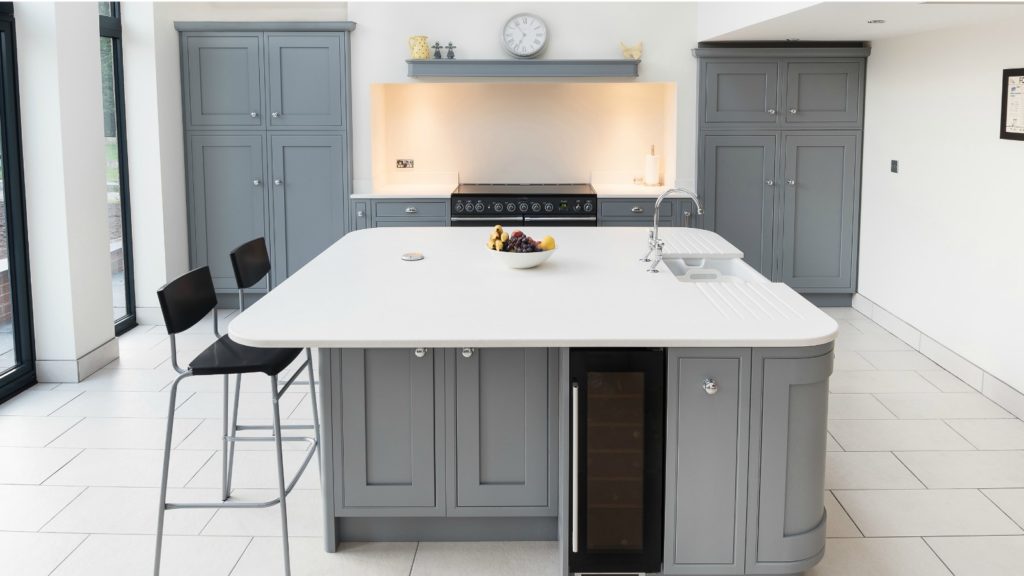
Using contemporary materials in a classical kitchen scheme, is reflected by the Mistral solid surface worktop in Glacier from Karonia. The 25mm solid surface has been curved and features drainer grooves
And interestingly, because a classic contemporary kitchen can’t necessarily be dated, the look appeals to all ages and won’t fade out of fashion.
Certainly, many designers would agree, this is a welcome remake of a true classic.



